Ways to use GOI paste for polishing products
The paste can be used to process products from a variety of materials. Previously, several varieties of this tool were produced. In any particular case, it is necessary to choose the right type of GOI. In addition, the polishing process itself must also be carried out correctly. You should understand how to use GOI paste.
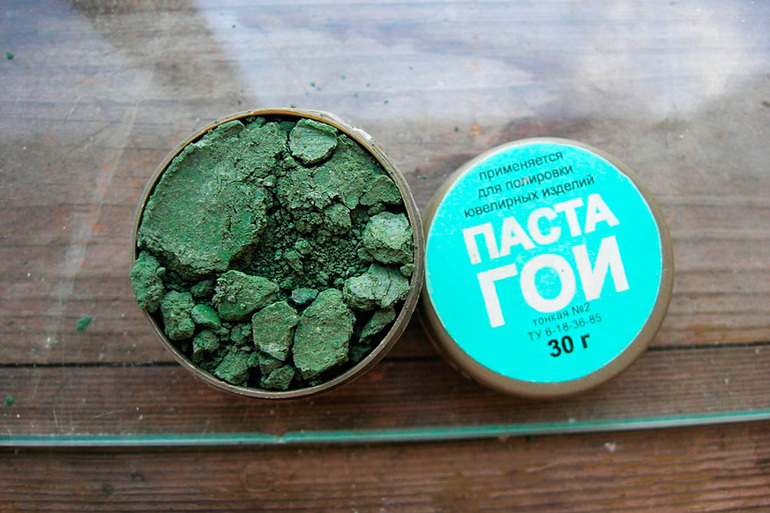
Polisher History
Pasta was invented back in the 30s. XX century here in Russia. Developed by its employees GOI. Therefore, the paste is called in the form of the abbreviation GOI, which stands for State Optical Institute. Almost a hundred years have passed since the invention of this tool, but it has not lost its relevance and is used for processing:
- plastic;
- ceramics;
- stone;
- glass and metal.
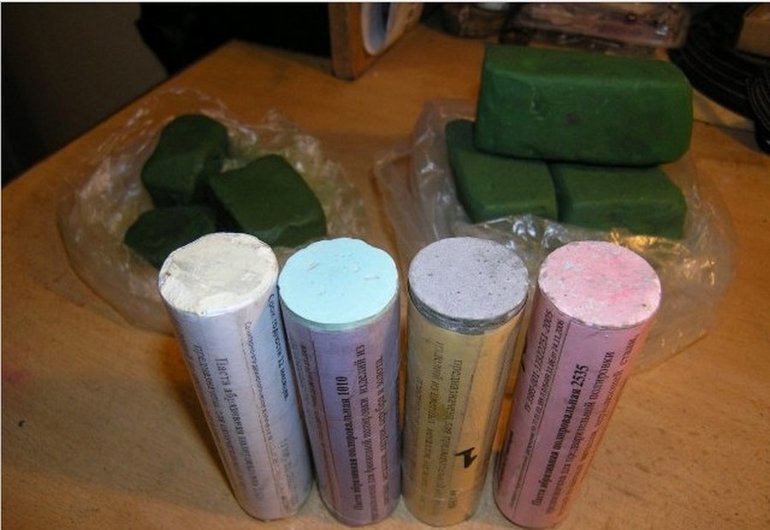
The method of applying GOI paste was known to our grandfathers. Initially, it was prepared from chromium oxide with additional substances and was green. Nowadays, such a tool is found on sale in the market and in stores. But it was green paste that was banned and its manufacture has ceased. The reason for this is chromium oxide, which is a toxic carcinogen.
The new GOI consists of aluminum oxide and it happens red or white. Using red substance, polishing is much more intense. But to make a very smooth and high-quality coating, you should use a white paste.
Types of Green Pasta
In the past, four varieties of green pasta were produced. In the modern market of abrasive substances, you can still find and purchase this product with various characteristics depending on the size of the abrasive particles:
- Sample No. 4 is able to conduct rough initial surface treatment;
- Abrasive marked 3 creates a matte finish;
- Pastes No. 2 and 1 are used for finishing and give gloss.
The green variety of GOI was produced both in the form of solid bars, and in the form of a more plastic ointment in boxes. Both types were popular, and this was explained not only by the highest quality of processing, but also by quite affordable cost.
Preparation for use
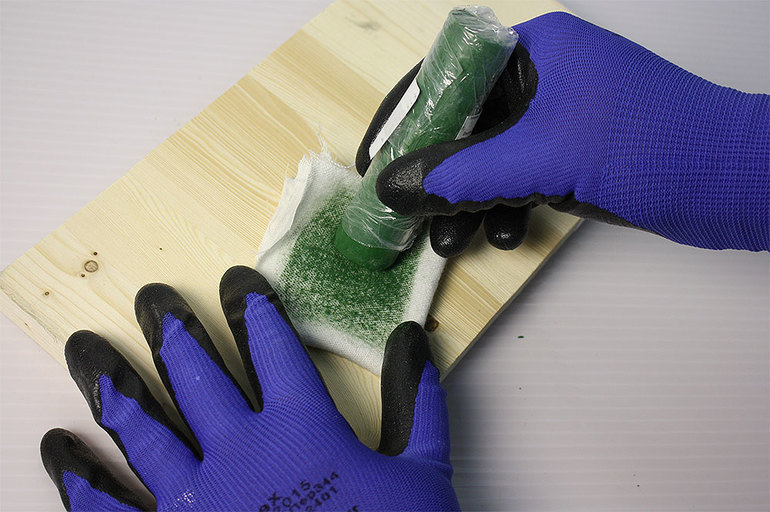
Worth sorting outhow to use GOI paste on metal and other surfacesrequiring polishing. The particles contained in the paste, when rubbing the coating, remove the surface layer along with microscopic cracks and scratches. Processing, as a rule, is carried out using soft rags soaked in gasoline (can be from a lighter).
Put a little paste on the rag and lightly wipe it on an unnecessary metal surface. This action is performed in order to break all the large lumps. If any remain, the surface will appear unpolished and scratched.
The rag flap should actually be soft. For example, you can use a flannel. In some cases, the product is applied to the polishing wheel. The product itself cannot be polished. Lubricate the surface in advance with the “Spindle” industrial liquid.
Instructions for various materials
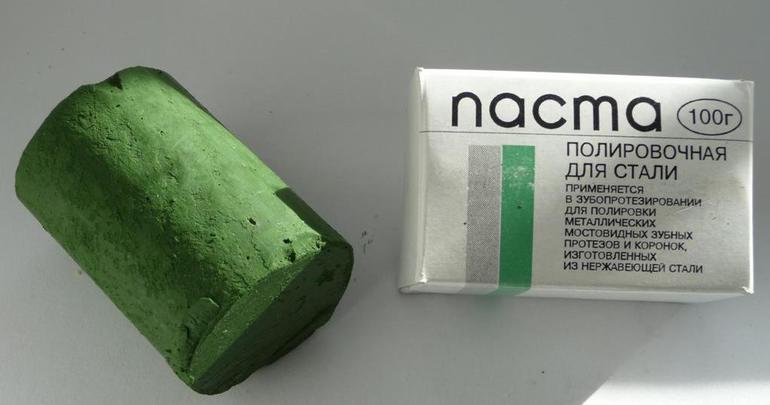
So, the polishing tool is prepared. Now you can proceed to the processing itself. For this, the product is simply rubbed. Moreover, it is not necessary to press hard on a rag. In this case, even more scratches and bumps may form.For these reasons, one should not make too abrupt hand movements. Rag manipulations must be carried out until a perfectly smooth surface is obtained. If necessary, periodically lubricate the product with the “Spindle”.
Deep defects
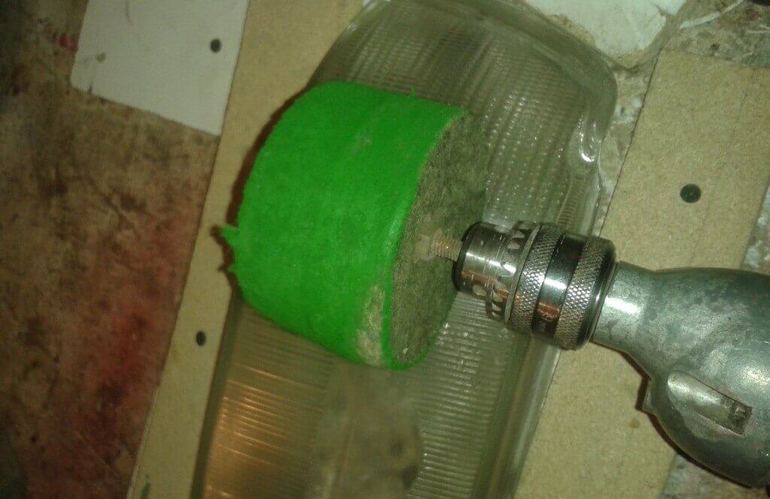
In the case of severe scratches on the product, processing usually begins with paste No. 4. Then proceed to No. 3. And finish polishing No. 2. The final shine is obtained with No. 1. After completing all operations, rinse the surface with kerosene, which can be bought at the pharmacy.
In the event that there is no kerosene at hand, rinsing of the treated object with running water is allowed. There are cases when, after polishing, rinsing and drying, the product is covered with a zaponlak. Which, in turn, seriously slows down the oxidation process.
In particular, the knives are treated with a leather flap stretched over a wooden block or a leather belt.
Glass and plastic

Quite often, GOIs are used to bring mobile phones into an appropriate form. In this case, first polish the body of the device, and then the glass screen of the display. Given that plastic is a fairly soft material, you should take jar No. 2 with fine grain to process the handset. Otherwise, the case can be scratched even worse. Plastic is polished in the same way as any other materials.
The glass screen is pre-treated with specially adapted rubber circles. Then use the GOI tool itself. The whole process is carried out using a rag. Processing with gasoline and oil is not applicable in this case.
Silverware
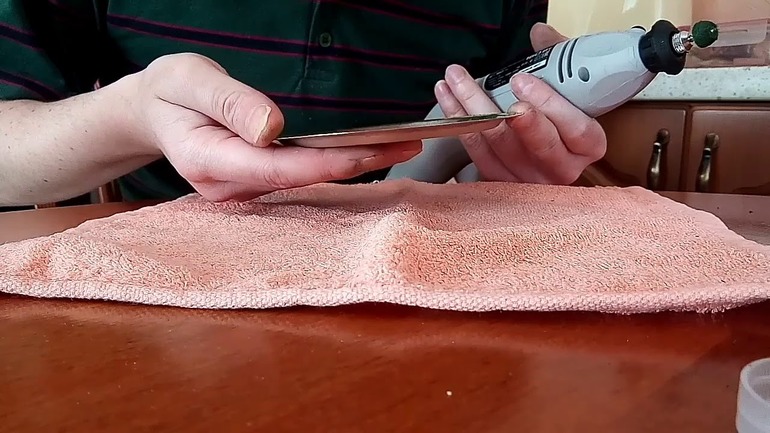
Any kind of GOI composition (green, red, white) can be freely used to polish absolutely any metal. This applies to table and jewelry silver. It is safe to use the GOI tool for cleaning cutlery that has darkened over the years, etc.
Immediately before starting polishing, clean the silver thing thoroughly with a toothbrush and tooth powder. Then, in a glass of water, dilute a little ammonia, as well as dissolve the soap shavings and dilute the washing powder. Stir the resulting mixture until all components are completely dissolved. Then carefully pour the contents of the glass into an enamel bowl.
Then put the silver utensils in the same place, put on the fire and bring to a boil. Then items need to be pulled out, rinse off the rest of the mixture with cold water and allow to dry. Next, soften and apply the abrasive GOI in the usual algorithm.
Special moments to use
In some situations, you can not use GOI paste. For example, you can’t use this tool in any way for processing gilded products, since the precious layer will be irretrievably lost and rubbed to a less noble metal. Items made of steel and nickel (with the exception of knives), as a rule, are processed not by hand, but using a special machine.
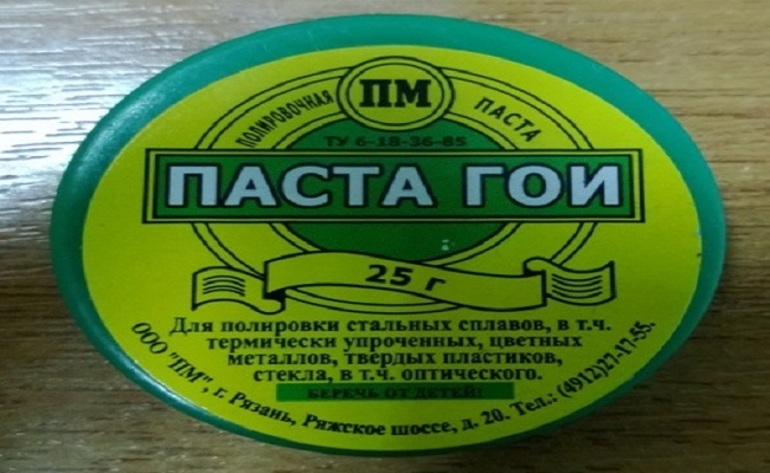
A metal clock should be polished with a rag, but it is necessary to pull out the clock mechanism in advance. Do not start processing severely damaged surfaces with paste options No. 2 and 1. In this case, product defects will become more serious. Sapphire crystal watches cannot be processed. The composition of the GOI simply does not take them.
Places of application
The GOI tool has found its application not only at home for processing watches, silver cutlery, dangerous razors and blades, but also in factory areas. In production, GOI paste is mainly used in galvanic shops for polishing parts from ferrous and non-ferrous metals. Processing is carried out using special polishing machines with felt circles.
Foreign analogues
Today on sale you can also find foreign analogues of GOI (decoding - State Optical Institute). A very popular specimen is considered a means from France Dialux.Its consistency is harder than that of GOI paste, and it is worse applied to the skin when sharpening knives. However, Dialux was recognized as more efficient to use. To polish metal products with paste of this brand can be much better and faster. Consequently, the prices of such samples are appropriate.
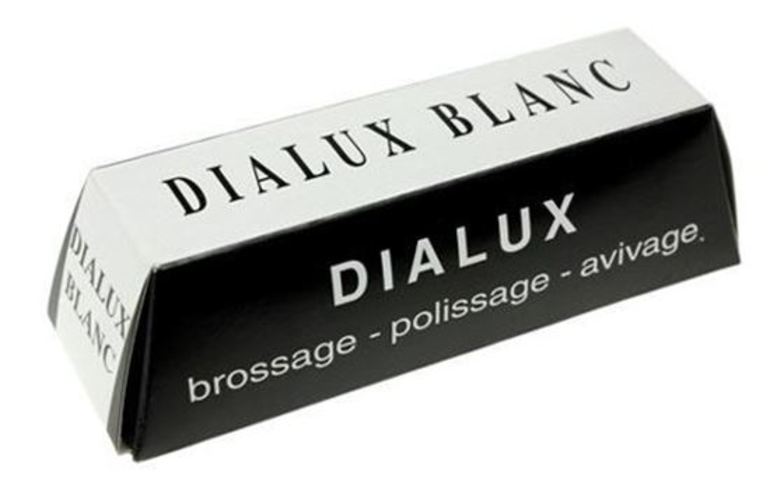
Dialux also has a lot more views than GOI. Foreign pasta is produced in bars, packed in multi-colored paper. By color, you can determine what material it is intended for.
Dialux paste is applied in the same way as our domestic GOI - with a soft and smooth motion. But the thickness of its layer when cleaning knives and other steel products should be thinner. Under this condition, the polishing agent will work with the skin. As a result, the effect of processing will be much better.
The polishing process using GOI paste is quite simple. The main thing is not to forget to wash your hands thoroughly after processing the surface of the product.
- How to choose a vacuum cleaner taking into account the characteristics of the house and coatings?
- What to look for when choosing a water delivery
- How to quickly create comfort at home - tips for housewives
- How to choose the perfect TV - useful tips
- What to look for when choosing blinds
- What should be running shoes?
- What useful things can you buy in a hardware store
- Iphone 11 pro max review
- Than iPhone is better than Android smartphones



